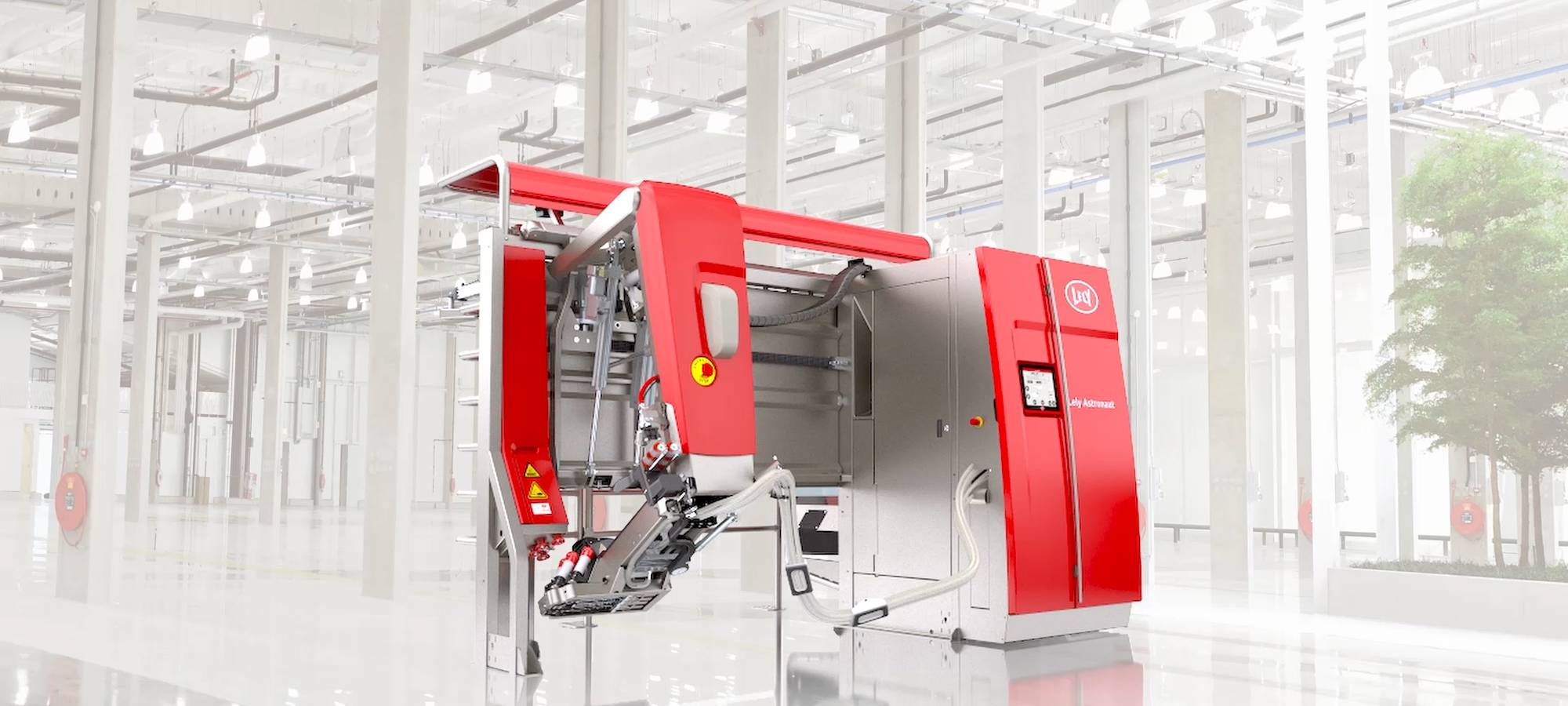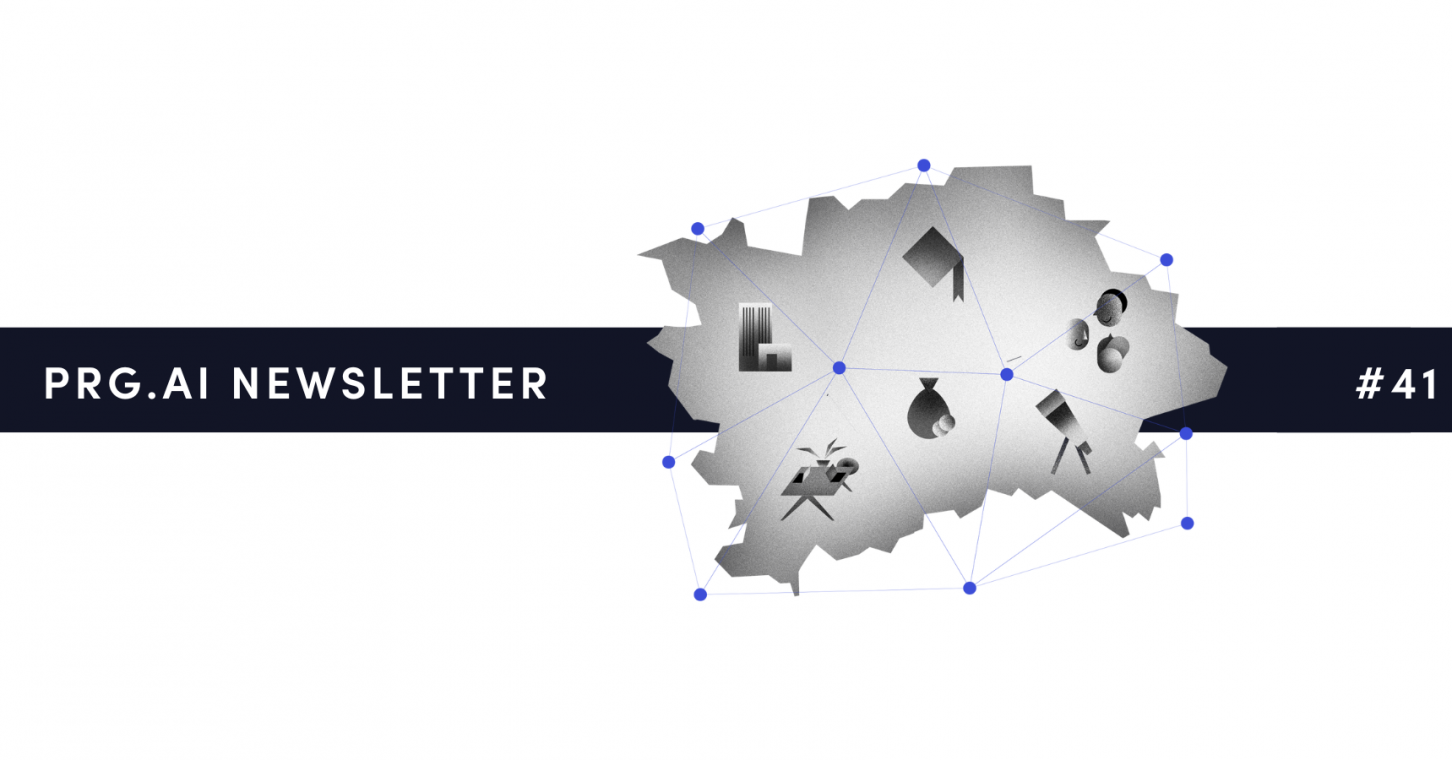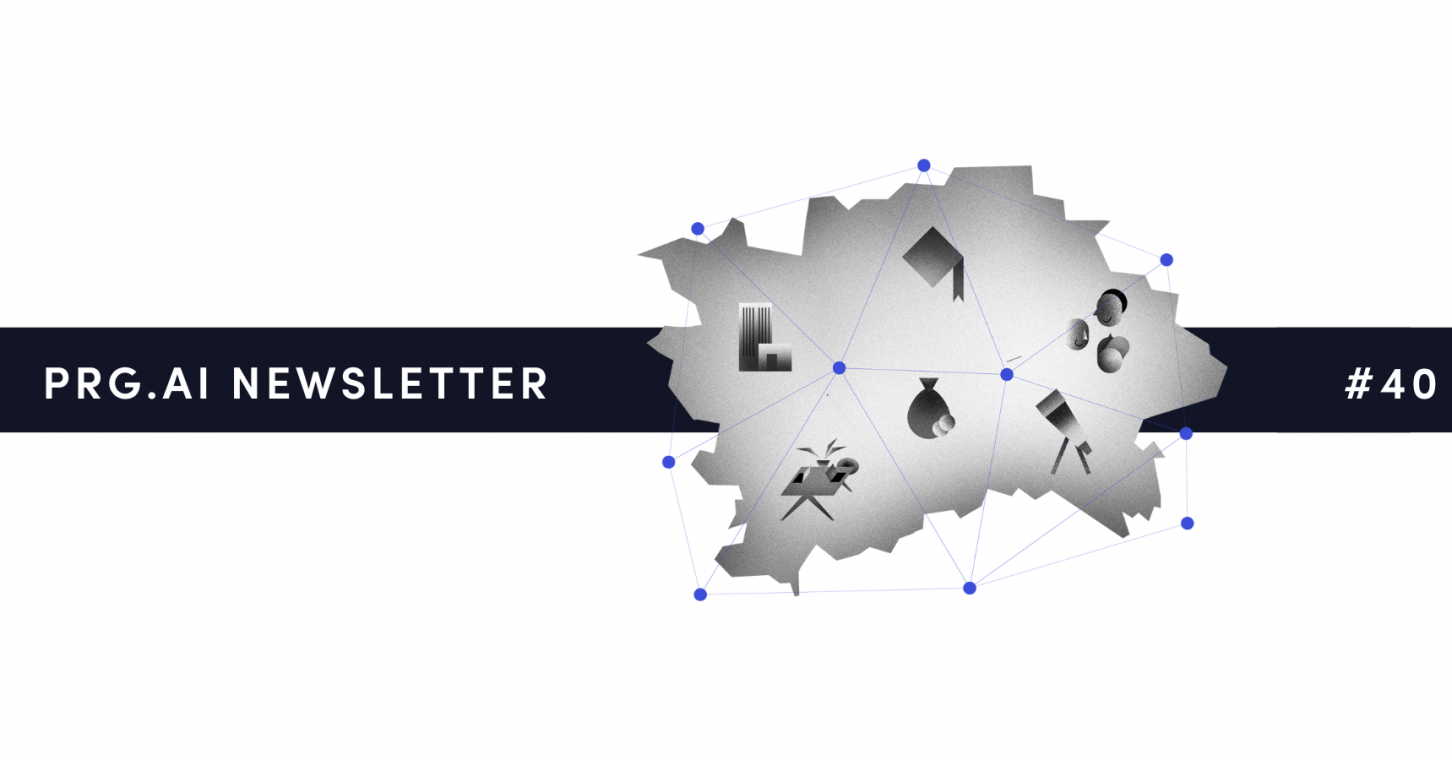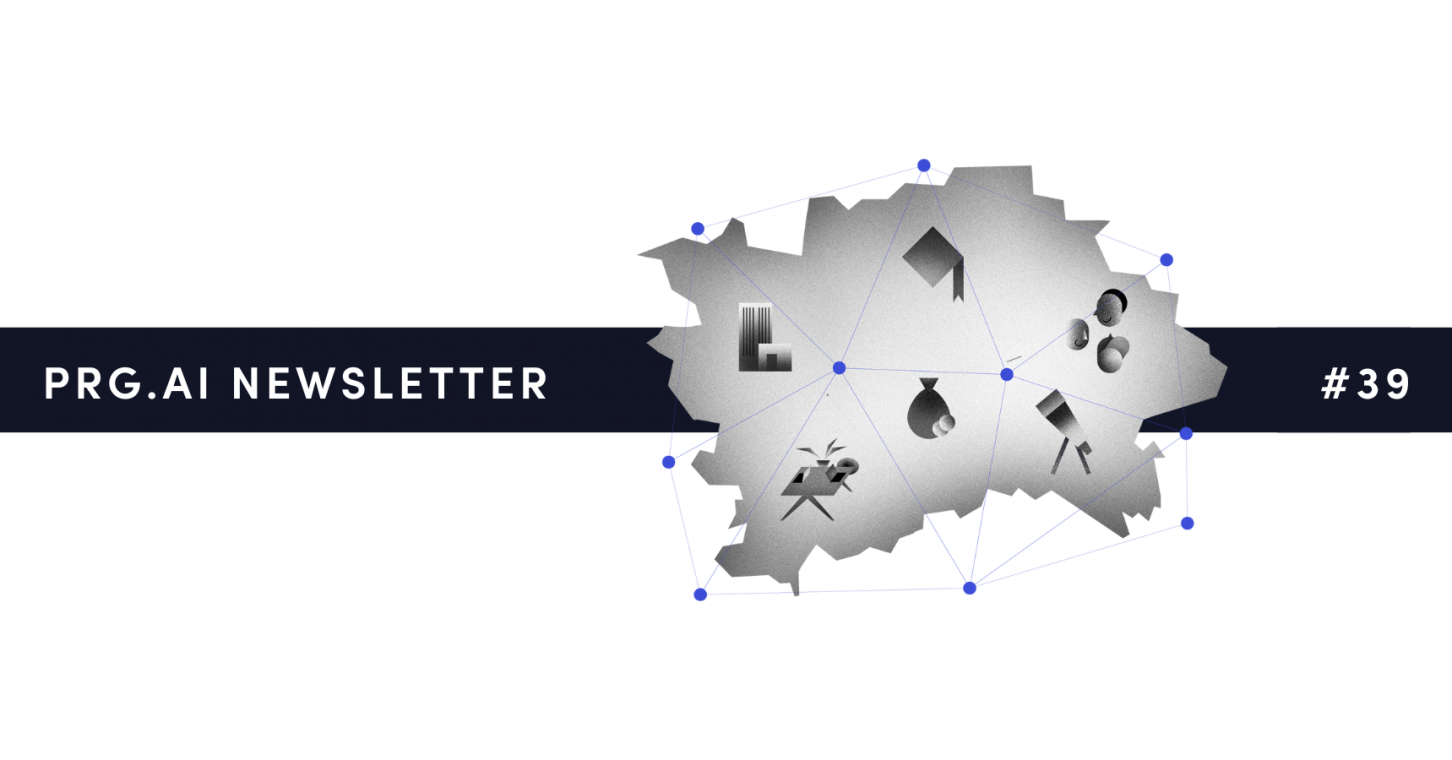Tomáš Borovička: AI contributes to making agriculture more sustainable
Cultivating plants and livestock used to be a human-only activity. But AI is quickly becoming a norm on farms and fields, in part thanks to Tomáš Borovička and his company Datamole who supply farmers with solutions that help them milk cows or produce beer.

Datamole specialises in applying artificial intelligence strategies to the fields of agrotech and biotech. What do these terms mean?
Agrotech is generally used to refer to innovative technologies deployed in agriculture, particularly in plant and meat production or water management. They are commonly utilised to optimise farmers’ and their businesses’ production processes, efficiency, and profit. Practically, these can be both machines and software solutions. Biotechnology is a slightly broader field: it deals with the use of living organisms and other biological material to produce agricultural, food, or medical products.
With AI, we help our clients in agrotech and biotech use modern technologies to, for example, robotise farms, harvest fruit, streamline dairy production, brew beer, or even improve control over the process of food fermentation.
Food fermentation? How can AI aid in optimising it?
Food processes such as fermentation are very precisely controlled. For example, in preventing food spoilage, detailed simulations of how temperature changes and how fast certain bacteria multiply are needed. Using similar models, we can determine the exact temperature at which the product should be stored or how long it remains safe for consumption.
Fermentation models work similarly: we need certain organisms to grow and consume the right amount of sugar, but we also need to halt their development at the right time. If the product is fermented for too long, it may contain too high of a concentration of alcohol; if it does not ferment enough, the final product may lack some other important substances. Artificial intelligence and machine learning, informed by a wealth of previously collected data, help to streamline these processes.
At DataMole, do you interfere with these processes directly, or do you primarily work to optimise them in theory?
I would say that we help find the right decisions and optimise processes. In food production, the key is to make the right decision at the right time, and that requires accurate and detailed information. Our solutions are effective thanks to an emphasis on data-centred analysis as well as artificial intelligence strategies, making it possible to automate various processes and program-specific interventions when needed. In some cases, therefore, we can closely control the relevant process and directly influence it.
Machines can tell ripe from unripe fruit and harvest it accordingly or autonomously decide to leave it for longer to ripen. AI can also distinguish weeds from grain, spray pesticides only on weed plants, and simultaneously give grain more nutrients.
How widespread is the use of artificial intelligence in agriculture these days? Can you give us some examples of its practical implementation?
Agriculture is a very broad field, and AI can be applied to it in many ways. Similarly to tasks in the industry, there is plenty of repetitive work in agriculture that can be automated — and artificial intelligence is taking the possibilities of automation and robotization to a new level. It gives machines the ability to perceive, which is crucial in machine decision-making to become precise and nimble enough to replace human labour.
For example, machines can now tell ripe from unripe fruit and harvest it accordingly or autonomously decide to leave it on the plant for longer to ripen. Artificial intelligence can also distinguish weeds from grain, spray pesticides only on weed plants, and simultaneously give grain more nutrients. Computer vision systems are also capable of identifying ill animals without human intervention. We always say that there are no limits to the implementation of AI into agriculture. Perhaps the only relevant constraint is the return on investment into such innovation, given the cost of introducing artificial intelligence into manufacturing.
Are there certain processes in which AI should not intervene, in your opinion?
I do not believe that artificial intelligence can replace humans entirely. It can assist them in simple tasks: recognising the ripeness of fruit is not exactly rocket science and does not require human expertise. But if an activity needs complex knowledge, experience, or dexterity, artificial intelligence won’t be able to complete it alone. Decisions that take into account many complex factors at once often benefit from years of experience collected by human experts. Such decision-making is a tough sell in the field of AI development: even the most advanced algorithms we have today fail to efficiently combine insights concerning, say, weather variability and appropriately decide how to store and when to transport harvested fruit. I think such tasks will take some time. However, we are not even trying to achieve such complexity at the moment — there are many much simpler processes still awaiting automation.
What are some of the solutions you provide?
From the very beginning of Datamole, we’ve worked with Lely, a Dutch company that deals with innovation on dairy farms. They are true pioneers in their field, having invented their famous milking robot 20 years ago. Their solution allows the cow to move freely around the farm, and when it feels it should have been milked by now, it enters the robot, its arm finds the udder, finds the individual teats, hooks the milking system up to them and automatically milks the animal, all without human intervention. Nowadays, they also design robots that clean the farm, deliver food, wash the cows’ hooves, or even rub and scratch the animals. It’s a complex system that allows them to automate what was once the job of a single farmer.

How exactly do you cooperate with Lely?
We are now helping them with a whole series of processes, but we always start with the very first step of every innovation process, and that is data collection, as agriculture generates huge amounts of data.
For instance, milking takes place every five to eight minutes on each automated farm. Several thousand data records from each milking monitor and describe details of the whole process, such as milk temperature, its chemical composition, fat, protein and lactose content or condimentality, which may indicate the likelihood of udder inflammation. To start innovating effectively, all this data needs to be collected, analysed, and utilised to improve the process. And we offer this first step to companies.
We’ve built a system that can collect data from a large number of devices and process it in real-time. In Lely’s case, data is collected from more than 30,000 robots around the world, which allows them to make better decisions about methods of milking that particular animal or whether even to let it walk into the milking robot at all.
Milking is a very complex biological process, where optimisation has the potential to increase efficiency dramatically. Thanks to optimisation, we can milk more animals in less time and make the process more pleasant for the animal, which shows in the improved quality of milk thanks to reducing stress hormones. Therefore, we can make sure that healthier and happier animals live on dairy farms.
So cows have gotten used to the robots by now?
Lely ensures so-called free cow traffic on its robot farms, which means that the animals can move freely around the entire facility. They get to decide for themselves at what point they want to go inside the robot and be milked. Cows generally take several weeks to learn to trust the process, and the farmer helps them with it at first. He lures the animal into the robot, shows it the process, and motivates it with tasty food, enticing it to visit again. And after a while, visiting a robot becomes a perfectly natural part of the day for the animal. The moment an animal feels it has a full udder, it comes up to the robot and the robot milks it automatically.
Does artificial intelligence play a role outside of animal products as well, particularly in plant agriculture?
Here I can give an example of another Dutch company — their tractors spray plants with fertilisers or other protective chemical substances. Their innovative approach rests in applying only the amount of substance that the plant needs to grow optimally. Each tractor is equipped with several cameras that can identify plants in real-time as the vehicle drives around the field. It is also equipped with an additional four hundred sensors, which measure a lot of parameters, and spray arms with a range of up to fifty meters. If you have a tractor like this driving through a field, you can optimise the dosage of pesticides, herbicides, and fertilisers in proportion to what condition the crop is in, how big they are, or the amount of weed plants growing there. We can process data from these sensors — sometimes even in real-time — and further refine those processes. In general, I would say that artificial intelligence in agriculture contributes to making the sector more sustainable.
As you suggest, agriculture is becoming a societally sensitive topic. Knowing that, how do you approach your choice of innovation projects?
Without intending to sound arrogant, we are rather selective when it comes to our clients. It is important for us to work on projects we believe in and trust that they have a positive impact on the natural environment as well as society. Of course, it is sometimes difficult to parse out what constitutes a positive contribution since societal perceptions tend to differ. For us in particular, it is crucial to see that the improved process or new product saves up someone’s work or helps them carry out their tasks better. Those are the projects that make sense for us to engage with.
Datamole’s services are mostly serving foreign clients. Was that always your intention?
Our first customer was Lely. There are many agricultural companies in the Netherlands as there is a deep agricultural tradition, and the Dutch are both great innovators and good clients. However, we also have customers in Germany, the US, and even in New Zealand. It’s because of the way we do business: we don’t have large sales and marketing teams, and our customers recommend us to new ones. So, it depends on where our clients operate and what countries they have contacts in. It seems to me that in Czechia, there is little emphasis on innovation and, therefore, little incentive to invest in AI. And let’s face it, investing in this technology can be risky in some cases, especially if you are the first in your industry to decide to improve a process using machine learning. But I firmly believe that it’s only a matter of time before we start implementing our solutions here too.
So what’s stopping it?
Maybe there is some uncertainty, mistrust, lack of funding. Czech companies are scared to take the plunge into innovation and take more risks. It is very costly to create a functional and consistent AI product, and developing it is not trivial: you need people educated in AI, which are in short supply around the world, and the investment usually only pays off when you are able to scale the operation to a large number of customers.
In Czechia, I think there is little emphasis on innovation and, therefore, little incentive to invest in AI. And let’s face it, investing in this technology can be risky in some cases, especially if you are the first in your industry to use it.
There is a lack of AI experts in the Czech Republic. You are trying to educate them in your research laboratory in cooperation with the CTU. What are you focusing on there, and what are your results?
It’s not that there is a shortage of talented people in general, but the demand is much higher. A significant number of entrepreneurs today already understand what artificial intelligence can offer them, so they want a person in their company to deal with innovation, data science, or artificial intelligence. We recognize this as well, so the research lab we have at the FIT CTU is a way for us to get access to talented students and expose them to what a data project looks like in an industrial setting, whether in agriculture or elsewhere. We’ve worked very closely with the faculty since the inception of Datamole; we have professional and friendship ties. We mostly develop algorithms in machine learning and artificial intelligence and apply them to real use cases. We have done dozens of bachelor and master theses, and many graduates from the CTU and Matfyz at Charles University join us afterwards to continue in their careers.
So are we succeeding in raising the next generation of AI experts?
I think we certainly are. Technical disciplines have a firm grounding in the Czech Republic, and the CTU, as well as Charles University and universities in Brno, are educating many future quality experts in everything from software engineering to artificial intelligence. However, the major problem with AI or data science is the lack of prior experience. The field is relatively young, and so there is a global lack of expertise to help approach and decide on projects correctly.
What challenges does this bring?
The malaise of AI companies and data experts is spending a lot of time on development that doesn’t add adequate value. This is also due to the fact that people working on AI usually want to create the best possible solution and reduce the error rate as much as possible. But, in my experience, even a model that is only eighty per cent accurate can save a lot of work. Every additional percentage improvement can then be disproportionately expensive. This is one of the biggest challenges in our field: finding that line where we say it’s good enough to move on, to go into production, and when to still pursue improvements and try to cover all the cases AI might encounter.
Next up from prg.ai

Typical Prague AI firm is young, self-sufficient, and export oriented, shows our new comprehensive study
130 companies, 11 interviews, 9 business topics. Explore all that and more in the unique study authored by prg.ai, which contains an overview of last year's most notable events on the local AI scene or articles on the future of AI or gender equality in research.

prg.ai newsletter #41
The first spring edition of our newsletter! Get the latest prg.ai updates, exciting news from the Prague AI scene, a curated list of interesting events, open positions, and much more. Stay in the loop!

prg.ai newsletter #40
The fortieth milestone issue of the prg․ai newsletter is packed with news and intriguing facts not only from the Prague AI scene. Keep reading so you don't miss out on anything!

prg.ai newsletter #39
What did the first month of 2024 bring, and what can you look forward to in February? Find out in the next prg.ai newsletter. Check out what's new on the artificial intelligence scene (not only) in Prague.

